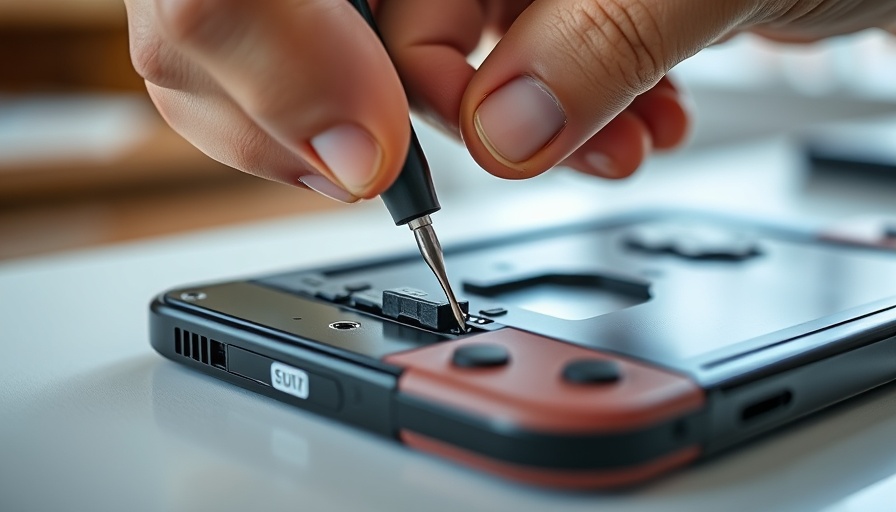
The Nintendo Switch 2: Progress or Regression?
The Nintendo Switch 2, a highly anticipated sequel to the original hybrid console, hit the market recently. Boasting an array of upgrades, including a high-resolution screen and improved internal mechanics, the device aimed to raise the bar for gaming consoles. However, upon taking a deep dive into its design and functionality, repairability advocates from iFixit have identified significant drawbacks that are sparking concern among gamers and marketers alike. Most notably, the persistence of joystick drift—a quirk that dominated discussions around the original Switch—proves that despite the promises of innovation, the Switch 2 may not be as far removed from its predecessor's headaches as many hoped.
Understanding the Joy-Con Drift Issue
Joystick drift is an issue where joysticks recognize movement even without user input, leading to unintentional actions during gameplay. For the original Switch, this problem became a major complaint among users, resulting in numerous calls for repairs and replacements. In researching the new device, iFixit has confirmed that Nintendo has seemingly not implemented any technological improvements to combat this problem, instead continuing with the technology that has previously led to defects. They highlighted that alternative joystick technologies such as Hall effect sensors weren’t present in this model, which could have corrected drift issues right at the source.
Repairability Challenges: A Step Back?
One of the more alarming findings from iFixit's teardown of the Switch 2 is that repairability has taken a hit. Awarded a repairability score of merely 3 out of 10, the new console is considered more difficult to fix than its predecessor, which scored a slightly better 4 out of 10. This assessment is particularly worrying for marketing managers forging relationships with consumers who value sustainability and ease of repair. With critical components such as the primary storage and game card reader now soldered in place, and the battery and display glued, users face significant hurdles if repairs become necessary, leading to a potential increase in e-waste and diminishing brand loyalty.
Industry Implications: Consumer Trust vs. Innovation
The state of the Switch 2 presents broader implications for consumer trust. Marketing managers need to recognize that with a rising emphasis on sustainability and consumer rights, products that are increasingly difficult to repair may alienate portions of the market. This poses a potential risk to long-term brand loyalty as consumers feel increasingly empowered to advocate for their rights as users.
Encouraging Developments in Competitive Spaces
Comparing the Switch 2 with rival consoles, namely the PlayStation 5 and Xbox Series X—both of which scored 7 out of 10 on the repairability scale—it's evident that consumers are drawn to brands that not only innovate but also prioritize user serviceability. This evolving landscape calls for marketing strategies that highlight a commitment to both product excellence and customer satisfaction.
Future Directions: Learning from Mistakes
As technology evolves, so too must the approaches to device manufacturing and repairability. For Nintendo and other industry players, there’s a palpable opportunity to learn from iFixit’s findings. Rather than relying solely on aesthetic improvements, companies should strive for a holistic upgrade strategy that engages with user feedback and focuses on enhancing the longevity and serviceability of products.
Conclusion: A Call for Change
The Switch 2's launch may signal technological advancements, but its inherent issues regarding drift and repairability cannot be glossed over. For marketing managers, this represents a unique chance for messaging and positioning in a crowded marketplace—a plea for manufacturers to reconsider their design philosophies. Consumer awareness regarding product reparability is rising; as such, brands must adapt or risk losing their foothold in this increasingly competitive environment. Emphasizing innovation paired with sustainable practices will be fundamental to winning over loyal customers in the years to come.
 Add Row
Add Row  Add
Add 




Write A Comment